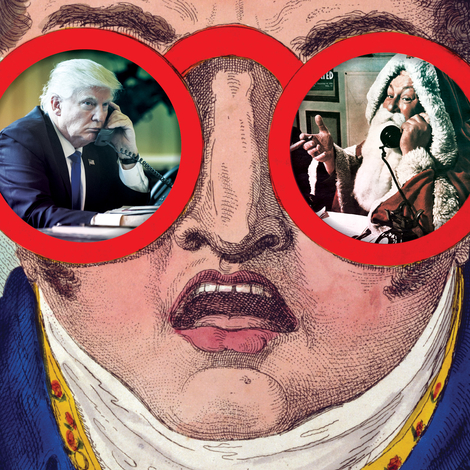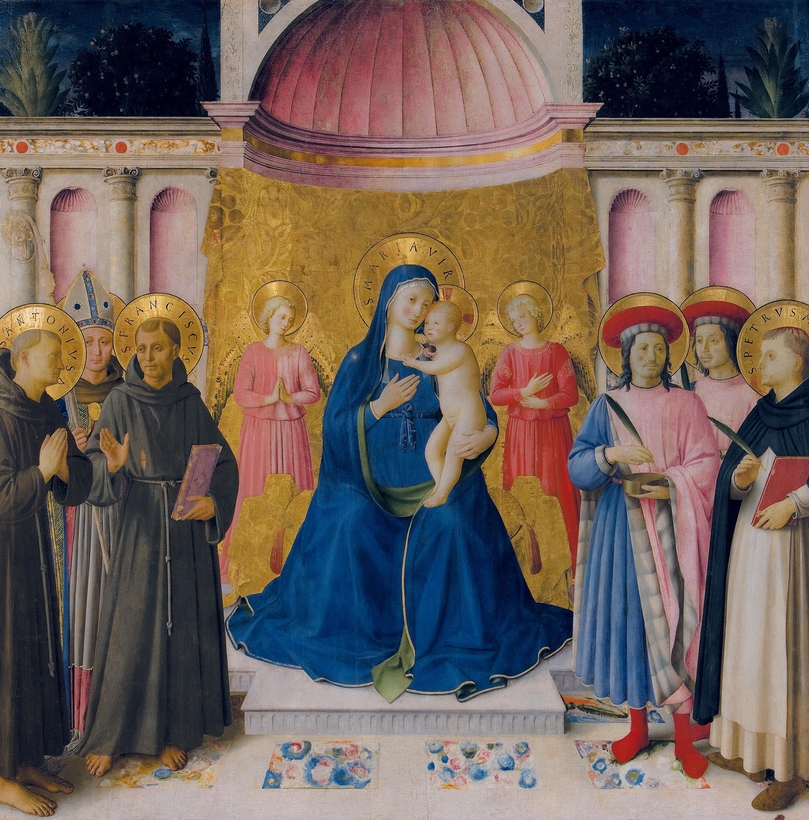A spectacular exhibition of frescoes, paintings, drawings, and illuminated manuscripts has just opened in not one but two venues in Florence—Palazzo Strozzi and the Museo di San Marco. Gold, lapis lazuli, and virtuosity abound. The subject? Titled “Fra Angelico,” this is the biggest show in 70 years on the early-Renaissance master whom Giorgio Vasari, the world’s first art historian, called a “rare and perfect talent.” Lit just right, the gilded panels, many of them newly restored, speak movingly of higher things.
Born Guido di Piero in the Mugello Valley north of Florence around 1395, Fra Angelico is believed to have come from a prosperous family that was able to send him to Florence to train as an illuminator of manuscripts. Guido eventually became a Dominican friar, dedicating himself to making art within the mendicant order; after his death, in 1455, he became known as Fra Angelico, or the Angelic Friar.
Vasari, who presented Fra Angelico as particularly pious, wrote that the artist could not paint the Crucifixion without crying. Whether this is historically accurate is unclear. But Fra Angelico’s treatment of familiar religious imagery is expressive and touching.

The artist’s effortless mastery of light and color, detail and gilding, is breathtaking. Artistic perfection can turn hard, even forbidding. This luminescent show, however, skillfully illustrates how the artist used his transcendent talent to tell well-known stories with dramatic freshness. At once naturalistic and otherworldly, Fra Angelico’s paintings are perfect meditations on the relation between the human and the divine.
Fra Angelico moved to the convent of San Marco and, between 1440 and 1452, aided by assistants, decorated the cloister, the chapter house, the dormitory, and the cells with more than 50 frescoes. To this day, the convent appears much as it did when Fra Angelico lived and worked there. As the scholar William Hood observed in his book Fra Angelico at San Marco, these frescoes make up “the largest group of related works by any artist to descend almost intact from the Italian Renaissance.”

In addition to the frescoes, which can only be experienced in situ, the exhibition at San Marco charts Fra Angelico’s early career and the artistic context of his time, which included Lorenzo Monaco, Masaccio, Filippo Lippi, Lorenzo Ghiberti, and Michelozzo.
Representing the transition from the late-Gothic style to that of the early Renaissance, Fra Angelico was one of the pioneers of new pictorial techniques such as vanishing-point perspective and more naturalistic depictions of the human body. The painter’s use of perspective is beautifully evident in the San Marco Altarpiece, in particular the carpet’s receding pattern, and in the arrangement of the empty tombs in The Last Judgement, both of which can be seen at Palazzo Strozzi.

“He is frequently looked at as a very devout, spiritual artist,” the Renaissance scholar Carl Brandon Strehlke told me. “But partly that is a result of the Counter-Reformation.” Strehlke, curator emeritus at the Philadelphia Museum of Art, organized the exhibition with Angelo Tartuferi, former director of the Museo di San Marco, and Stefano Casciu, the regional director of the National Museum of Tuscany. “What you really have is an artist who was part of a Dominican order who was also very much in touch with the art of his day.”
Four years in the making, with more than 140 artworks on view, this wide-ranging exhibition testifies to the organizers’ patience and diplomacy in gathering pieces from institutions around the world, including the Vatican, the Louvre, and the Met, as well as private collections and secretive religious orders. Several pieces have never been shown in public before. A beautifully illustrated 400-page catalogue has been published to accompany the exhibition.

One of many highlights in the show is the reconstruction of the first truly Renaissance altarpiece, commissioned by Cosimo de’ Medici and his brother Lorenzo, and painted between 1438 and 1442 for the Monastery of San Marco. Chopped up and dismantled in the 17th century, the altarpiece has now been reassembled at Palazzo Strozzi, with all but one missing element. At a moment when the humanist ideals of the Renaissance are under threat, a pilgrimage to Florence offers uplift—and a reminder of the importance of beauty.
“Fra Angelico” is on view at the Museo di San Marco and at Palazzo Strozzi, in Florence, until January 25, 2026
Louise Bokkenheuser is a New York–based award-winning writer and editor. Her work has appeared in The New Yorker and the Los Angeles Times, among many other publications


